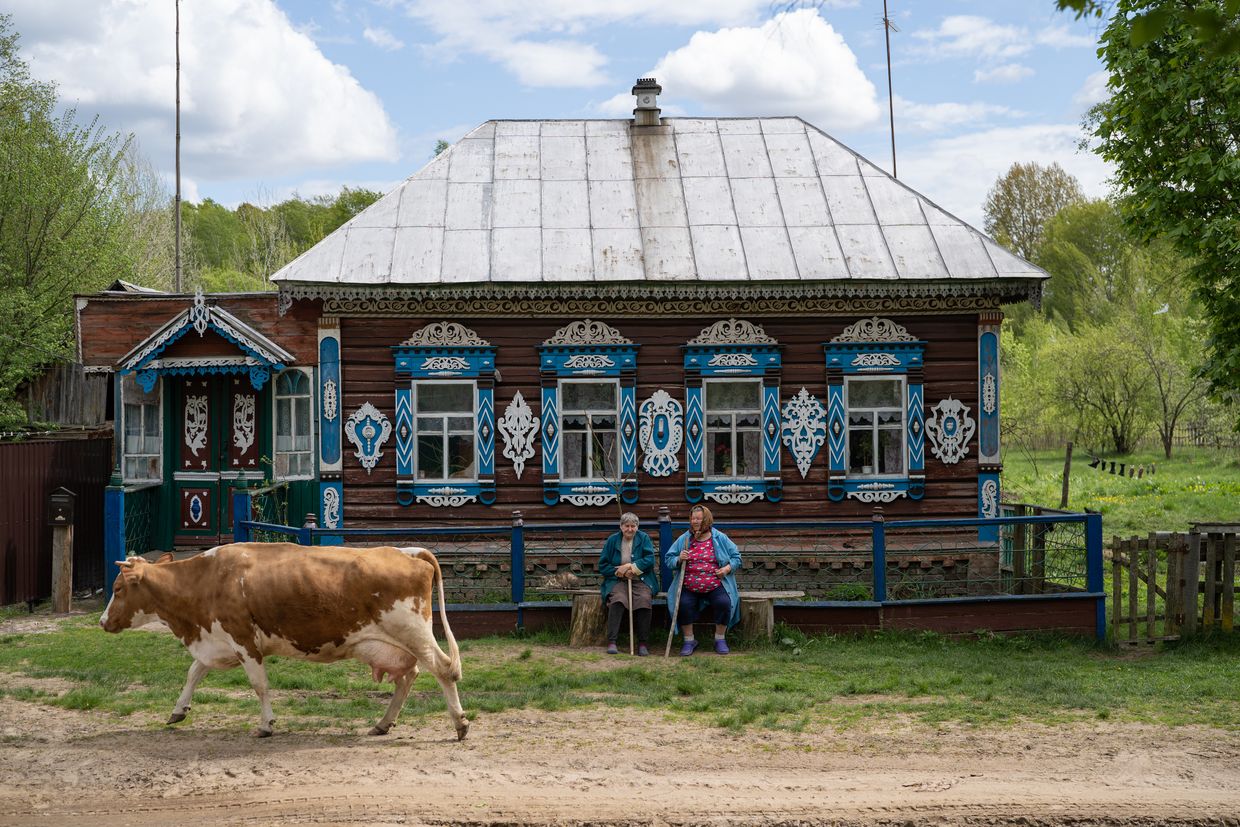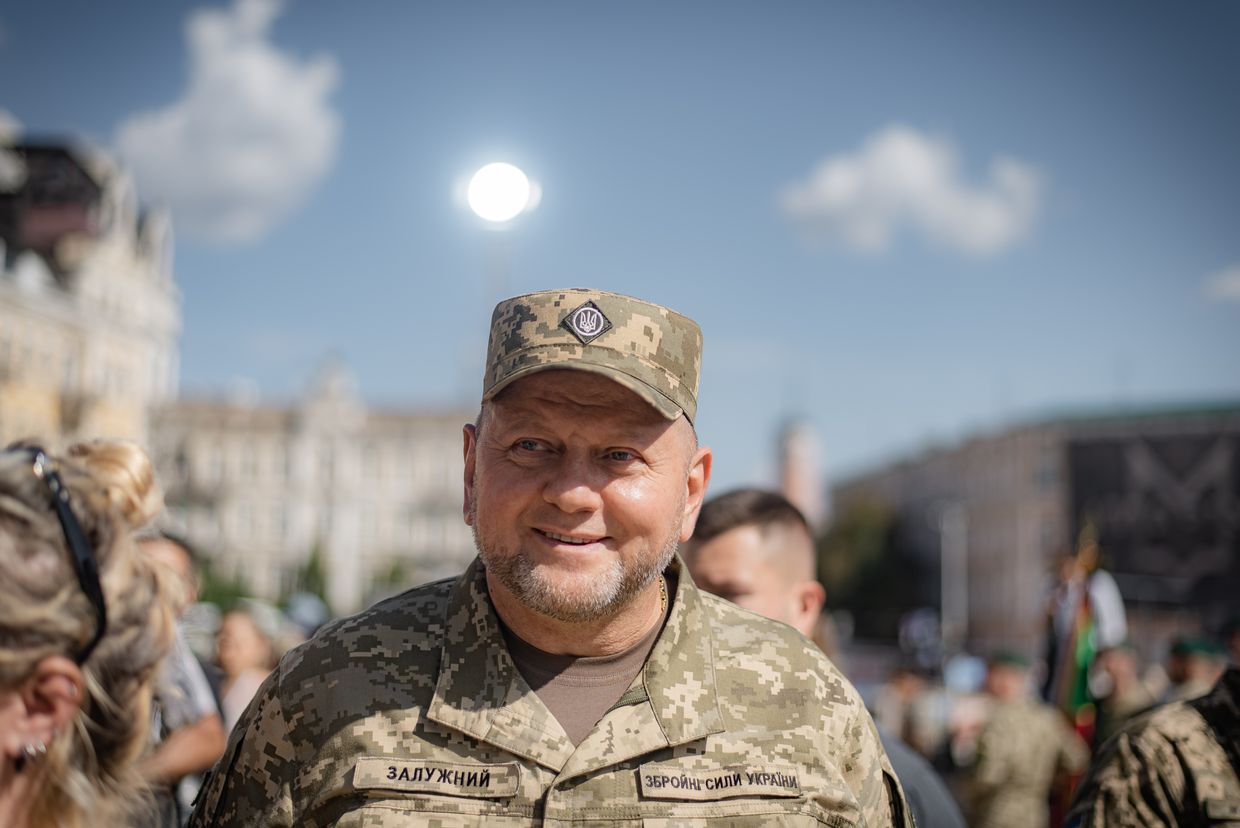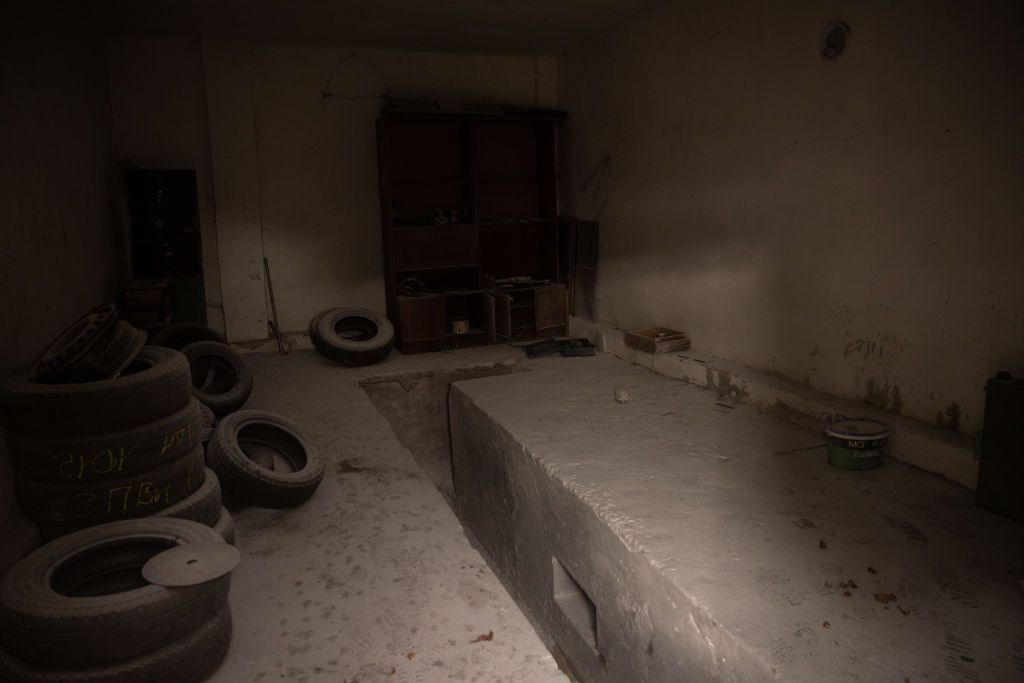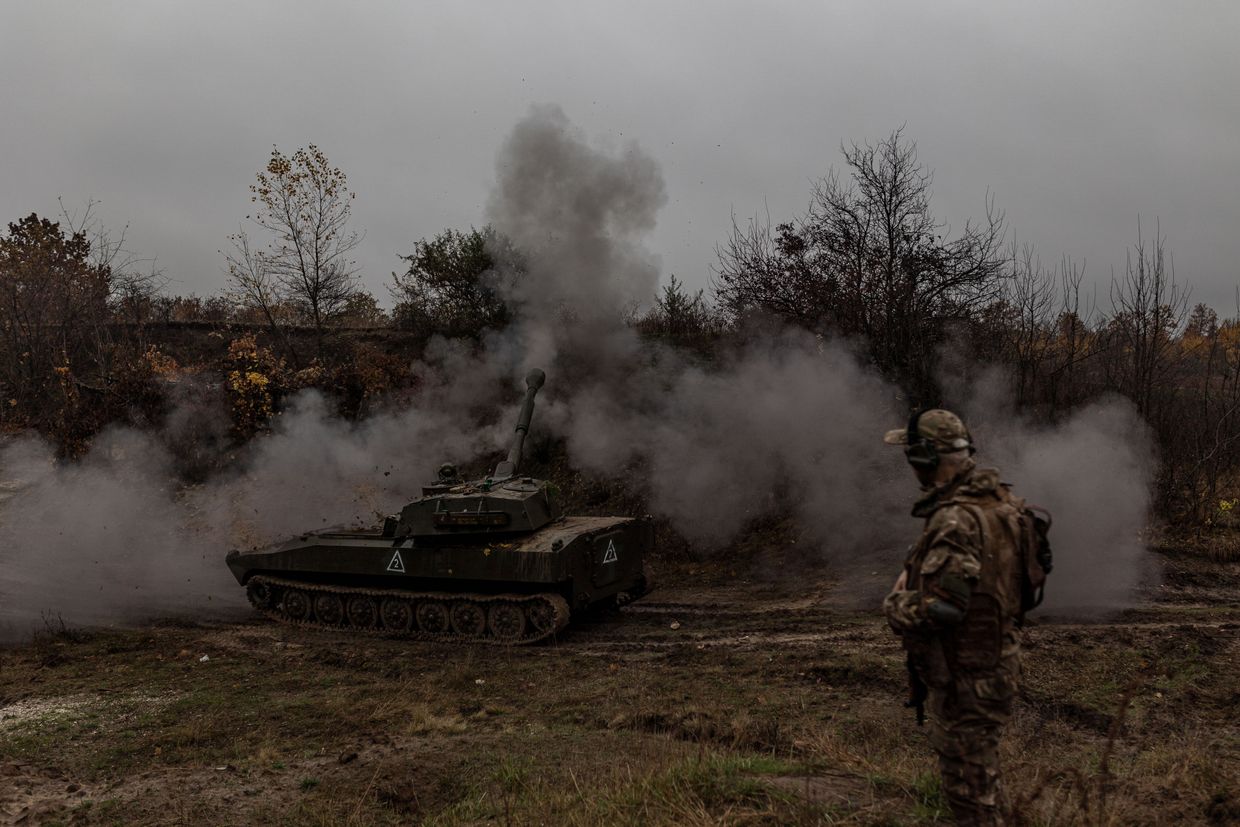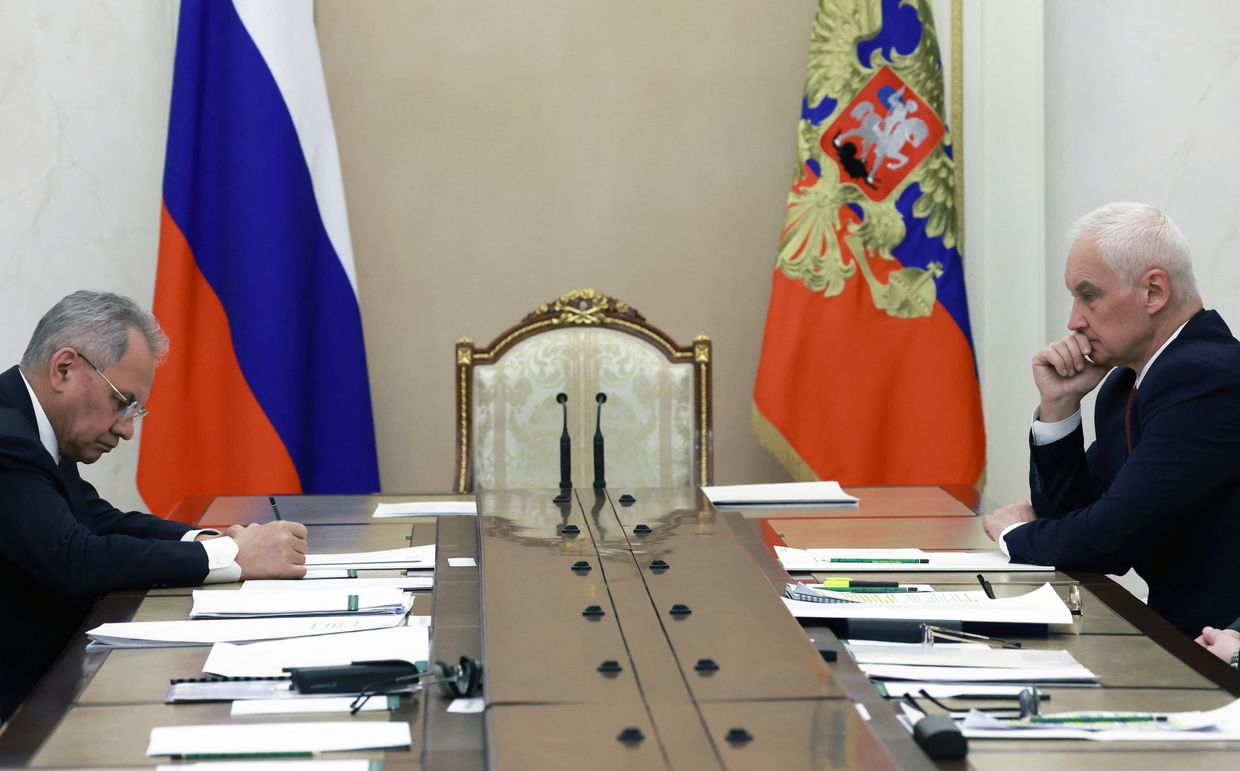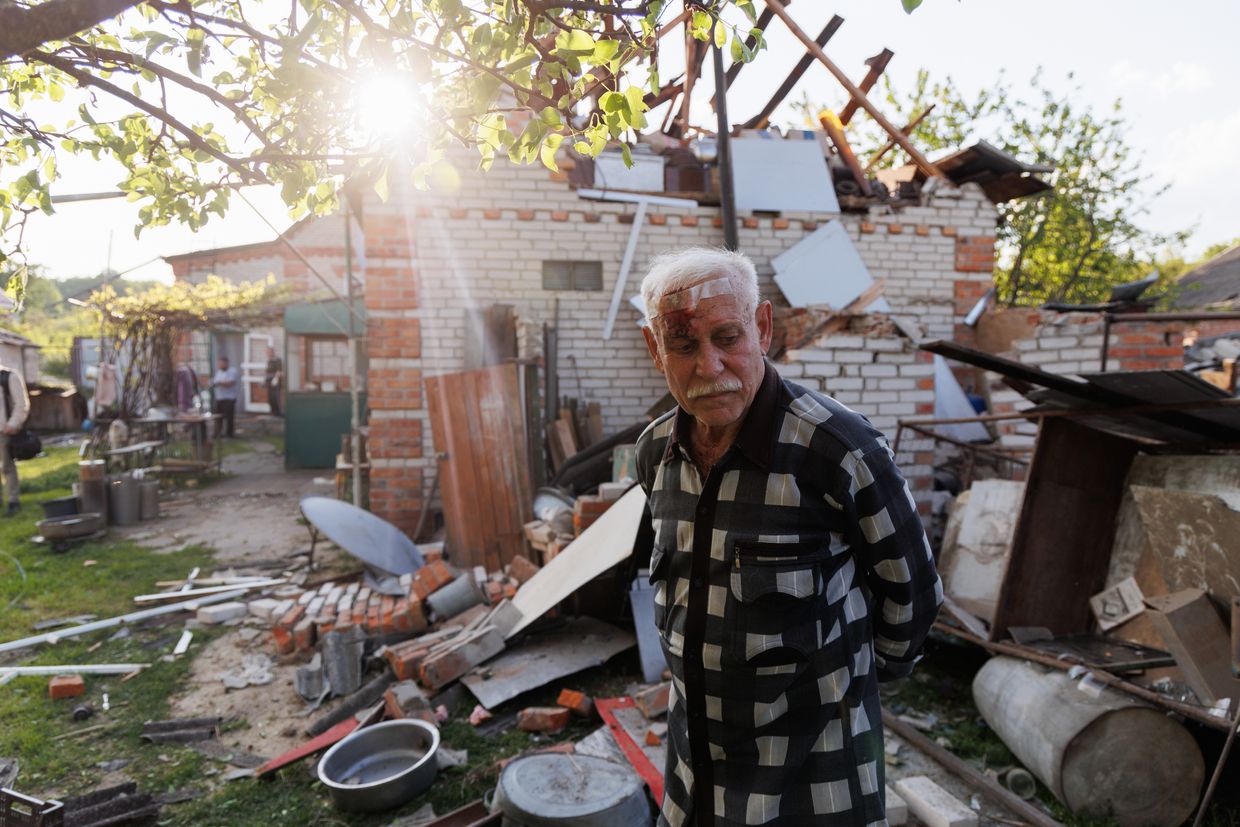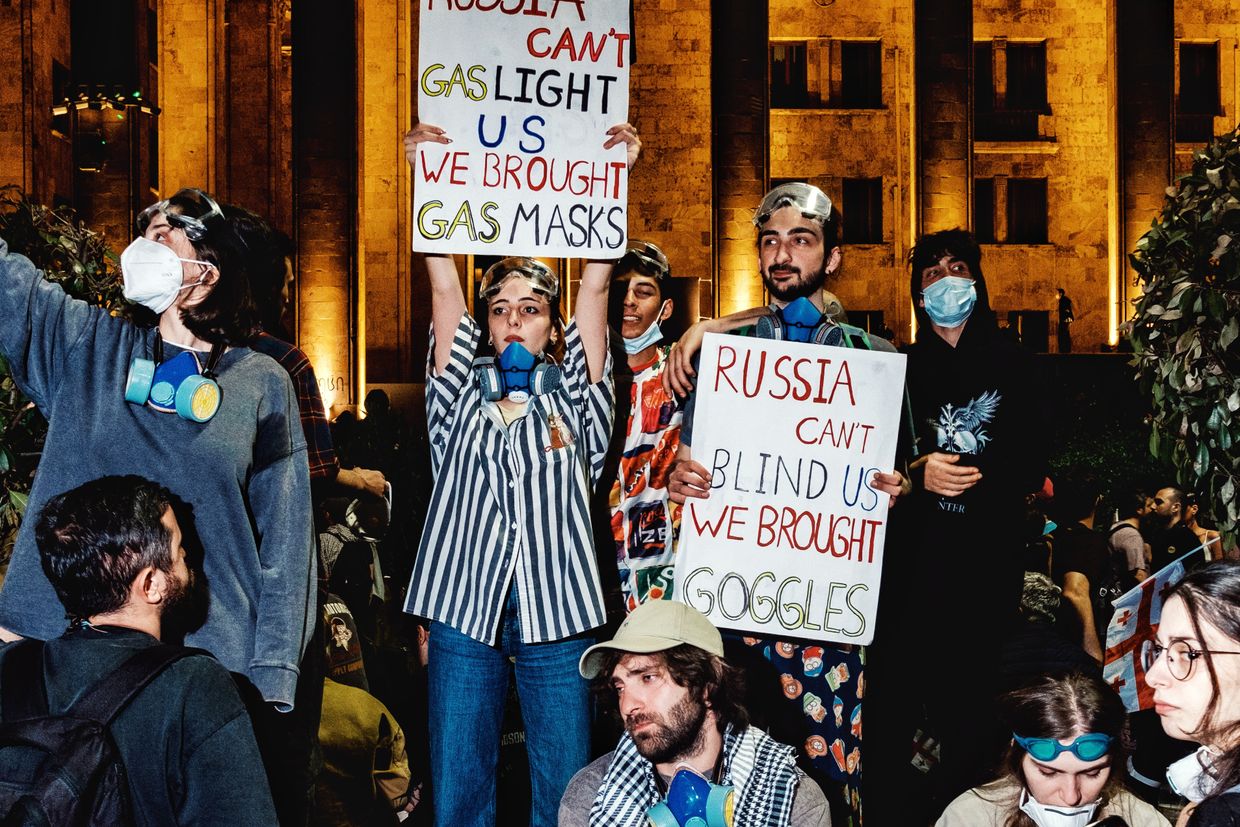Svitlana Oslavska and Anna Ilchenko embarked on a mission in 2020 to document Ukraine’s villages before they were lost to time and war.
Traversing across Ukraine’s vast landscape, the sisters started speaking to people from villages about topics as diverse as the best construction method of a house to their contemplations on life and death.
They select brief yet emotionally charged excerpts from their recorded conversations with locals to share on Facebook and Instagram under the title Old khata project. The word “khata” roughly means “cottage” in English, an apt description of the unique old architectural style of homes found in Ukrainian villages.
Ukraine’s rural population is shrinking yearly, with many people moving to larger cities or abroad for better prospects. Documenting these villages and the people who still call them home has been a way of preserving an important – yet slowly vanishing – part of Ukraine’s cultural legacy.
With Russia’s all-out war against Ukraine impacting many villages, the Old khata project also became a testimony to the Ukrainian people’s resilience.
The journalist-photographer duo has visited nearly 100 villages across Ukraine over the past three years, including villages in Luhansk Oblast that have since fallen under Russian occupation and now-destroyed villages in Kherson Oblast.
“This is what cannot be restored, and it's crucial that we were able to document it. Even without the war, sooner or later, time would have destroyed these houses,” Ilchenko told the Kyiv Independent.
“To some extent, each photograph is a monument and, simultaneously, a trace of the past.”

A lifelong love of villages
Oslavska and Ilchenko grew up in Sievierodonetsk, an industrial city in Luhansk Oblast currently under Russian occupation, but as they told the Kyiv Independent, they have always been drawn to villages.
Their mother and father hail from villages in Volyn and Luhansk oblasts, which are separated by over 1,000 kilometers on opposite sides of the country, “so we traveled to visit our relatives from a young age, and no region of Ukraine was foreign to us,” Oslavska explained.
What appealed to them was how village life “continued with its familiar rhythms and decades-long cycles” despite the fact the sisters’ lives and surroundings changed as they grew up.
According to Ilchenko, they were often told that they romanticized village life because of their city roots.
“But I believe that this detachment and the almost absence of negative memories associated with village life allowed us to see these houses in a new light,” she said.


Despite the fact that an increasing number of Ukrainians are relocating to urban centers, village life continues to exert an appeal in Ukrainian culture.
Ukraine is fundamentally an agrarian society and day-to-day village life is tied to farming, livestock, and being connected with nature. Strong bonds have been formed in these small communities, making it easier to preserve and pass down traditions related to food, language, folk songs, religion, and more.
Many Ukrainians return to their family’s native villages during important holidays like Easter or for a short vacation to reconnect with their roots and unwind in nature.
In every Ukrainian novel where village life is prominently featured, nature holds a certain magnetism. For example, in Olha Kobylianska’s novella “Earth” (1901) the heroine is introduced as loving “nature above all.”
“She used to wander in the mountains… alone. She knew the mountainous outskirts as well as her own room, and she would head for one of the best and wildest nooks of the forest during her summer walkings.” (Translation by Lesya Budna)
Traveling across Ukraine has ultimately reinforced the sisters’ belief that the division of Ukraine between East and West is “an artificial construct of political operatives,” as Oslavska put it.
According to Oslavska, Ukrainian life isn't so much divided along a regional axis as it is along the axis of Kyiv or any other major city or district center and village life. Each region has its characteristics that shape locals’ worldviews. However, based on their travels, the sisters caution against making any sweeping generalizations about Ukrainians.
“When we visit different corners of the country and get to know people, we avoid making such generalizations, whether positive or negative. We came to understand that people, at their core, are similar, but their place of residence and historical circumstances influence them, and that's perfectly normal,” she said.

Old Khata Book
The sisters were sitting in Ilchenko’s kitchen in Lviv in 2020 when they realized they could combine their strengths in journalism and photography to make a book about Ukraine’s villages.
This September, Choven Publishing House released the Old Khata Book, culminating their three years of work, which includes selected excerpts of what they have been publishing online.
The years leading up to the book’s release started with “test missions,” as Oslavska called them, including the village of Dzembronia in the Carpathians and Oleshnia in Ukraine’s northern Chernihiv Oblast that winter. They launched a crowdfunding campaign in the summer of 2021 to expand the Old Khata Project nationwide.
The sisters explained that the most interesting part has been traveling to regions they knew the least about and had hardly or never been to, including parts of Sumy, Kherson, and Mykolaiv oblasts.
“It was fascinating to listen to the local dialects and meet such wonderful people, no matter where we went. Each region has its unique architectural features in building and decorating houses,” Oslavska said.
According to Ilchenko, physically preserving many of these houses is a “utopian (concept), much like trying to preserve a certain period in time.”
That’s why photographing them opens up the possibility to “rediscover the forgotten, draw inspiration from them, and create new narratives and forms of existence for Ukrainian houses.”
During their travels, the sisters have discovered not only local traditions but moving and unique stories.
For example, they met an elderly man from a village in the Carpathians who would nail a small wooden cross to his house on each anniversary of his wife’s passing.
“It's not typical, and it's not practiced anywhere else, but he established his own tradition of memory,” Ilchenko said.
The sisters take the basic approach of documentarians to their work, spending several days in a particular village, talking to local people, walking the streets, and taking photos.
“We talked to people about their homes, how they were built, and recorded these conversations on a recorder, occasionally on video,” Oslavska said.
However, the sisters quickly realized they didn’t want to craft a “typical” reportage describing these people and their houses in the third person – they wanted the people and houses to speak for themselves.
“Through these houses, we can see how people lived during Soviet times, what (architectural and design influences) came to us from other epochs and empires, and what independent Ukraine has contributed to them. This incredible palimpsest tells us, ultimately, who we are,” Ilchenko said.
“While houses don't speak, they are sometimes no less interesting than their owners.”
In the book, a man named Mykhailo from the village of Kosmach in western Ukraine’s Ivano-Frankivsk Oblast described building a house as once being “sacred work” compared to today. He emphasized the importance of selecting the right plot of land, taking into account factors such as where the cows would graze.
A woman named Vira from the village of Volosivka in Zhytomyr Oblast shared that a house shouldn't stand alone. She emphasized the importance of having nearby trees, which not only provide shade but sometimes bear fruit as well.
These examples highlight the practical aspects of building a house in the village and the careful consideration that went into their design.
The choice of building materials like wood, clay, and straw depended on the local climate and people's budgets. Some features, such as a chimney, could be seen as a luxury. Houses also needed regular maintenance. Symbols like crosses, the sun, moon, or animals could be found carved on house exteriors, depending on the region.
Despite the distinctiveness of regional architectural styles, Oslavska and Ilchenko found some commonalities no matter where in Ukraine they traveled – for example, the use of the color blue. Even cemeteries feature the color blue, the sisters said.
When village residents were asked why they’d chosen the color for their homes, they simply replied that it was beautiful or it had always been that way.
The sisters plan to continue the Old khata project and have ideas for new forms of the project beyond social media. They also hope to publish more books, but only after Ukraine’s victory.
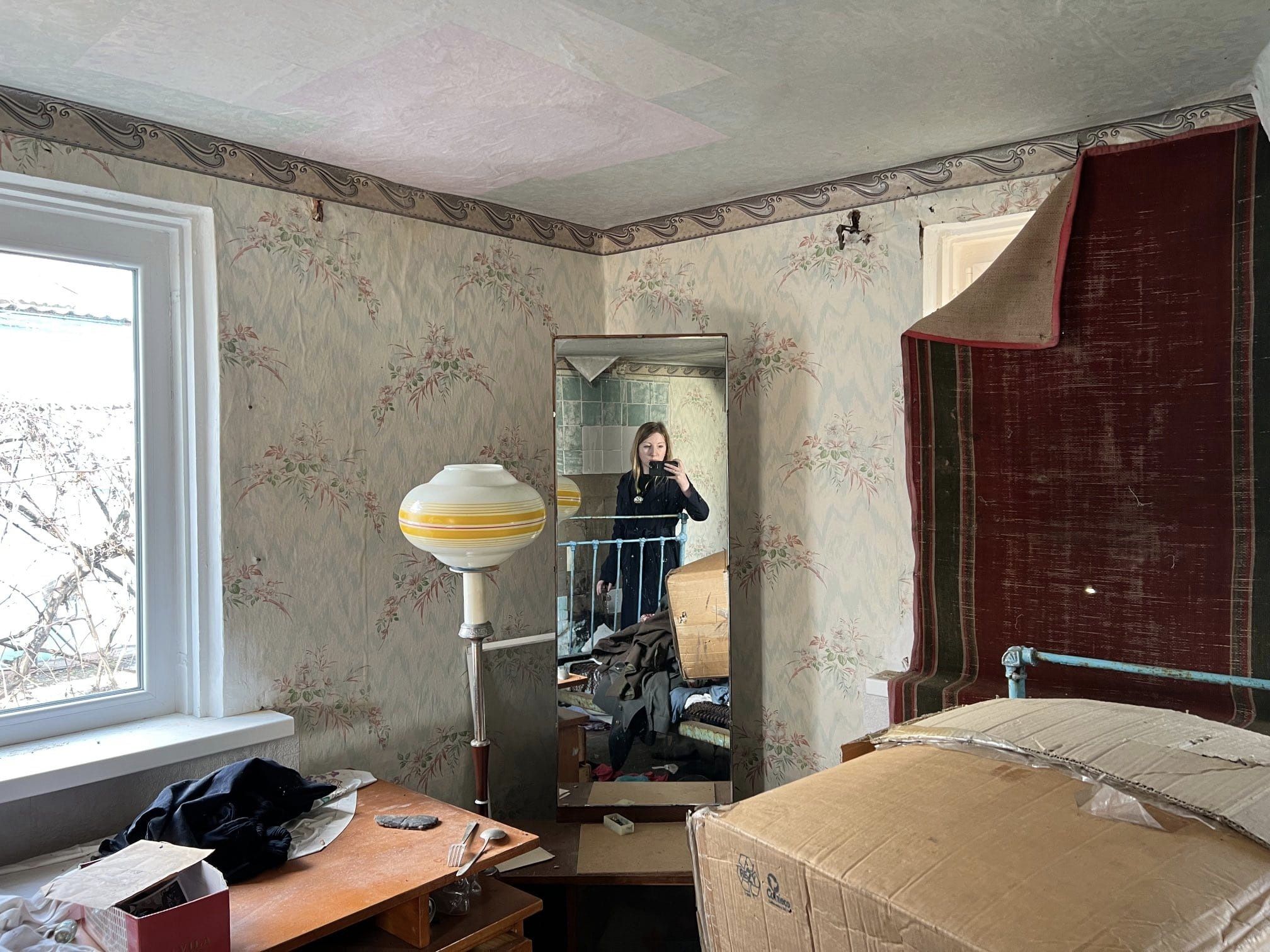
War changed everything
“People (in the villages) became more fearful and conscious (after the full-scale invasion),” Ilchenko said. “Our conversations sometimes began with the feeling that locals were ready to call the police, but thankfully, it ended with the same people offering us coffee in their kitchens.”
Before Feb. 24, 2022, the sisters joked that they were seen by village residents as “preachers, real estate agents, teachers, Jehova's Witnesses, anything but researchers of culture, documentarians, or photographers.”
With shrinking village populations, the sense of familiarity among residents has become even more of a defining feature that fosters solidarity and, during wartime, something that can ensure survival.
“People in villages open up gradually, and when they finally trust you, it's worth all the goodness in the world,” Ilchenko said.



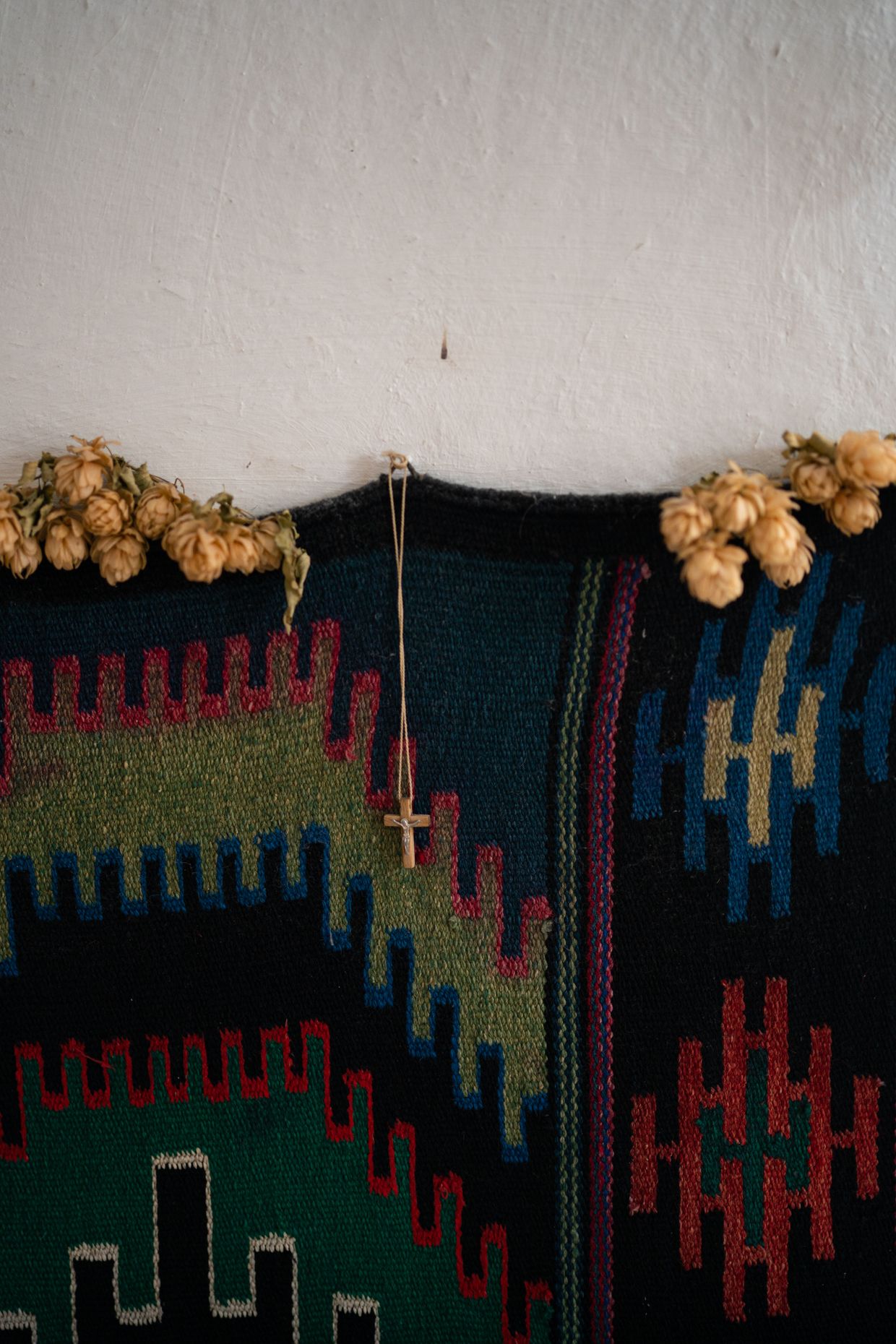
Numerous villages across Ukraine have been subjected to Russian artillery, missile, and drone attacks since Feb. 24, 2022. Russian soldiers have occupied and ransacked people’s houses, bringing with them the threat of violence and death.
A woman named Yelyzaveta from Ukraine’s southern Mykolaiv Oblast told the sisters about how her family hid from Russian soldiers in the spring of 2022 and waited to be rescued. Eventually, their food supply started running low, and they had to act fast.
“We left on April 1, and in March was my son’s birthday. We spent it in the basement. He told me, ‘Mom, this is the worst birthday I’ve had.’ I will remember these words for life,” Yelyzaveta recalled.
“We were only saved by the grace of God, I think.”
A family member managed to repair an old car, and the entire family hurriedly piled inside, shielding the children's bodies in case Russian soldiers opened fire as they escaped. Once they reached safety in the city of Mykolaiv, Yelyzaveta's children excitedly rushed toward the apples and bread they spotted in the supermarket.
“We bought everything we saw. I inhaled the aroma of the bread so deeply that I can still recall its scent lingering under my nose,” Yelyzaveta said.
According to Oslavska, Yelyzaveta and her family have since returned to Novopetrivka. Despite the ongoing threat of war, many Ukrainians hold onto the importance of home.
Editor’s Note: Kate Tsurkan was involved in the translation of Old Khata Book into English
Note from the author:
Hi, this is Kate Tsurkan, sharing an important culture-related story from Ukraine. Due to Russia’s ongoing genocide, most stories about Ukrainian culture will, unfortunately, be related to war for years to come. But Ukrainian culture is finding ways to persevere and it's important to share these stories.
If you liked reading this article, please consider continuing to support our reporting to see more like this.



